A cost accountant and professional marathon runner, Neela Ranavikar Panchpor of Pune is growing all vegetables, herbs and fruits from sugarcane to exotic fruits such as cherries, dragon fruits etc. in her soilless garden of 450 square feet. A passionate environmentalist, Neela along with 12 other members has formed a group on Facebook named, Sendriya Parasbaug which is an Organic Garden Group (OGG) to share tips and techniques to other passionate gardeners and farmers. She also conducts gardening classes on weekends.
Neela says, “Soilless planting seems fascinating as it doesn’t require soil or any pot mixture to cultivate. Rather it uses compost prepared at home using dry leaves, straw, kitchen waste and cow dung.”
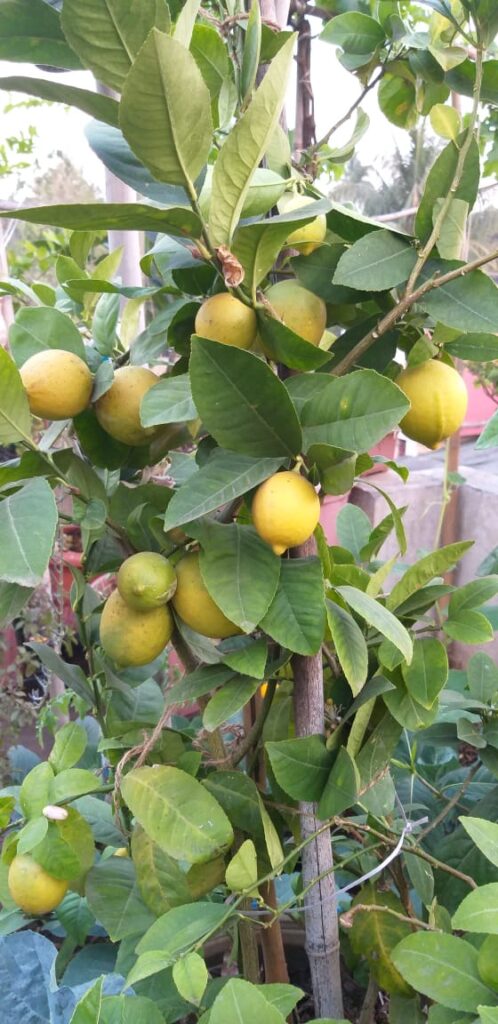
Neela’s gardening journey began 10 years ago! She said, “I have always been an Environmental friendly person. But what always worried me was the daily generation of kitchen waste. With several ideas and advice, soilless gardening influenced me. To begin with, I started planting in one or two pots. However, initially, I did not receive quick and good results. I had to learn many techniques, read books, watch YouTube videos, approach and get guidance from people already practicing composting. Slowly I learnt the segregation process and prepared compost by myself.”
Neela considered her friends who were practicing composting and organic farming for many years as an inspiration and learned from them.
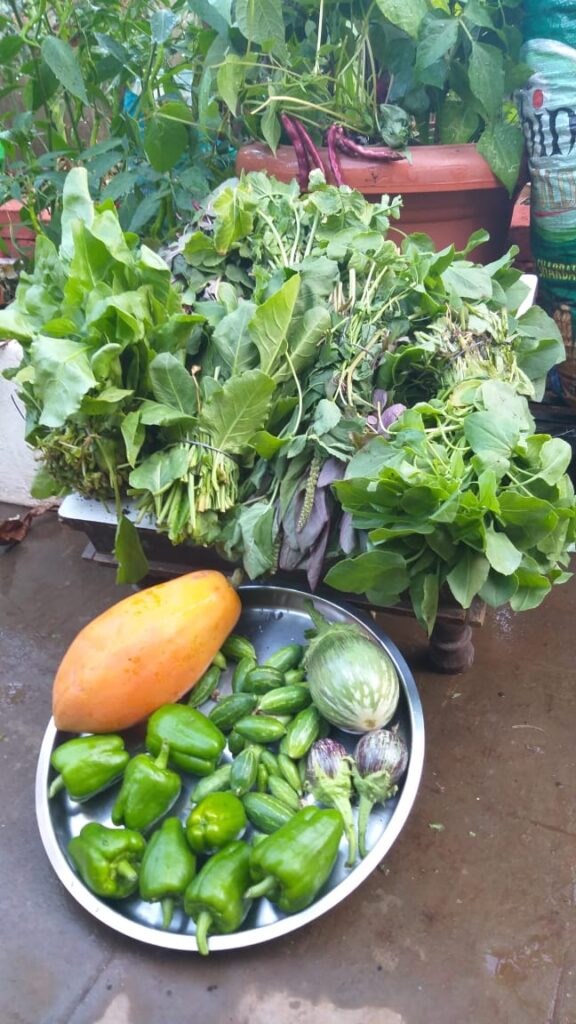
Neela also highlighted the benefits of soil-less gardening. They are as follows:
1.) Soilless planting promotes chemical-free cultivation of crops. Fertilizers and pesticides used are truly organic.
2.) It reduces the harm to the living creatures. Like the insects, birds help in pollination and the worms for cultivation, the use of organic fertilizers and pesticides decreases the harmful effects on their lives.
3.) Soil-less gardening introduces a new technique to effectively use kitchen waste. The wet waste generated can be put to form compost.
4.) It promotes positive health benefits. As the soil (here compost) already consists of all the nutritious values the growing plants and we the consumers receive guaranteed health benefits.
5.) Lastly, it requires less water and most probably watering is required in every two to three days.
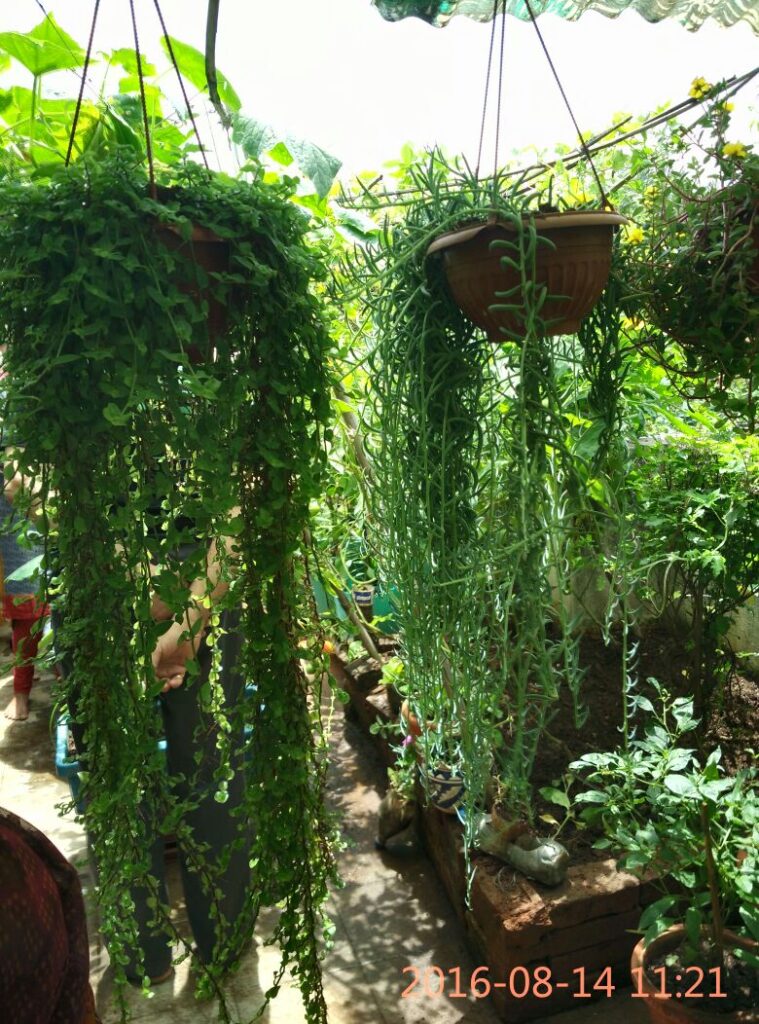
Neela has a 500 square feet terrace in which 450 square feet is occupied for gardening. In one corner of the terrace, she had made a pit made up of a pile of bricks for composting. In regular intervals, she adds dry leaves, cow dung and kitchen waste in it. “I keep it covered for at least 2 – 2.5 months to maintain the moisture. Once it is ready, I seperate the top layer aside and take out the compost from the bottom. Then once again add the ingredients to prepare the next compost.” Says Neela explaining her composting techniques and procedures. She uses the Vermi-compositing techniques for the composting kitchen waste.
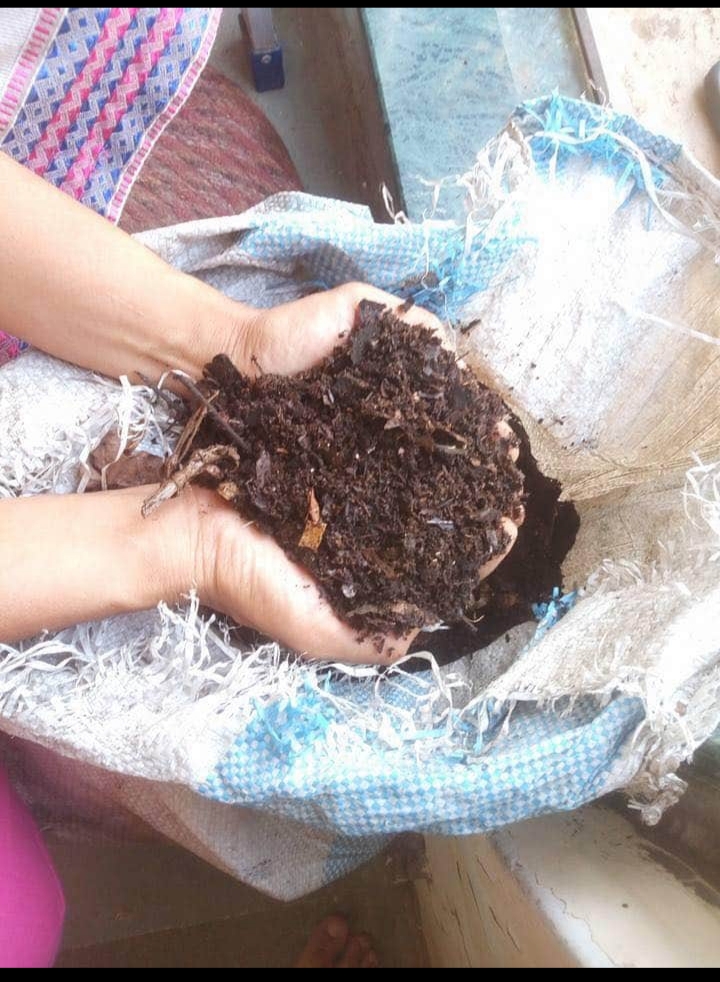
She uses natural pesticides such as Cow’s urine(Gowmutra), Neem oil, Neer Dudh(raw milk). Neela also advised, “Water after washing poha, rice, dal and curd water can act as an effective pesticide.” She also practices ‘Mulching’ – a covering of straw, compost, or plastic sheeting, spread on the ground around plants to prevent excessive evaporation or erosion, enrich the soil, inhibit weed growth, etc.
“Each time I got successful results, motivated me to experiment more!” said Neela, who at present cultivates ample amount of crops in her terrace garden. Her achievement boosted her confidence to grow more crops. “I distribute the extra grown fruits, vegetables to my friends, neighbours and relatives.” Says Neela.
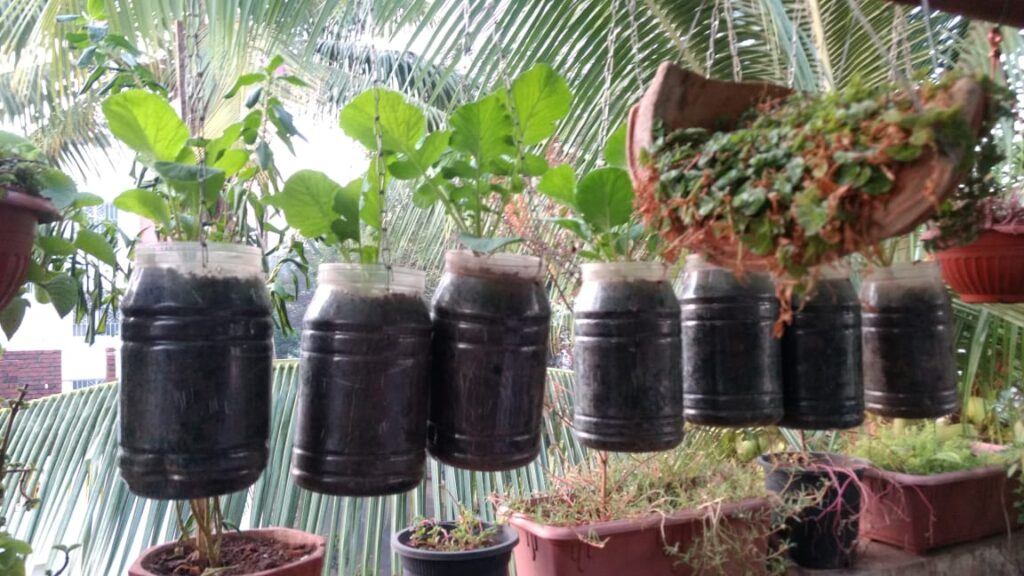
As the number of plants in her garden increased, containers were a big concern for her. Therefore, she came up with an idea of using the best out of waste. “In the beginning, I used containers already present at homes like small dabbas, plastic jars, buckets and bags. But it also depended on the crop to be grown. I used small containers, bags and buckets for growing capsicum, potatoes, sweet potatoes, eggplants, etc. Small bottles for carrots, radishes, turnips, ginger, etc. Also, I used thermocol boxes and crates for growing cauliflower, cabbages and other leafy vegetables. I also grow flowering plants such as periwinkle, rose to introduce increased pollination,” explains Neela.
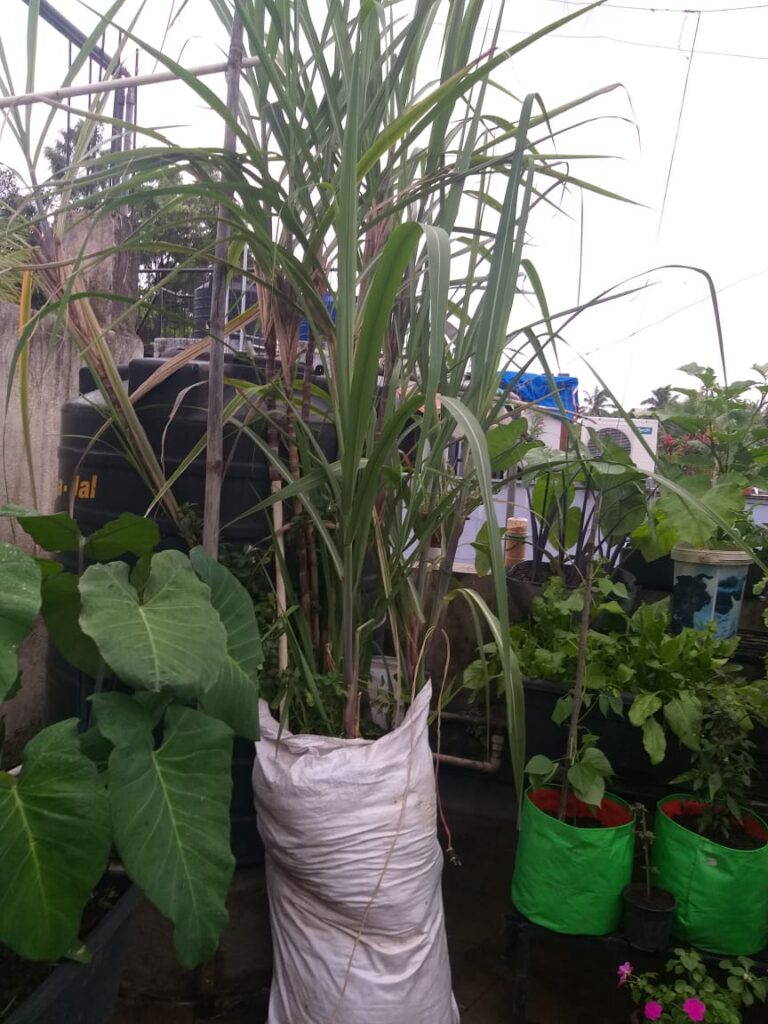
“I planted a few pieces of the cane fruit, and within seven months, more than six to seven full-grown shoots were ready for harvest. Sugarcane needed more water compared to other plants but no special techniques or nutrients were required. For another experiment I also grew them in bags,” says Neela.
She also grows many exotic fruits like dragon fruit, passion fruit and cherries. The earthworms are the most important factors promoting her cultivation. They not only help in the healthy growth of the plants but also help in loosening the soil. They are well fed with the kitchen waste and fruits and vegetables from the growing plants. To ensure their healthy survival in the soil, Neela adds organic fertilizer known as ‘Jeevamrut’. It is prepared by mixing different proportions of cow dung, urine, jaggery, and gram flour.
Neela along with 12 other members has formed a group on Facebook named, Sendriya Parasbaug which is an Organic Garden Group (OGG) to share tips and techniques to other passionate gardeners and farmers. Till date the group has 58,000 active members following. Also, they have started a WhatsApp group with a handful of members. With the increase of members, they created 5 Whatsapp groups with 1200 members in all. They hold sessions to create awareness, share ideas and techniques. Every month on at least two Sundays, Neela conducts gardening workshops where she teaches participants to prepare compost and fertilizers.
Written By: Vaishnavi Jawalkar

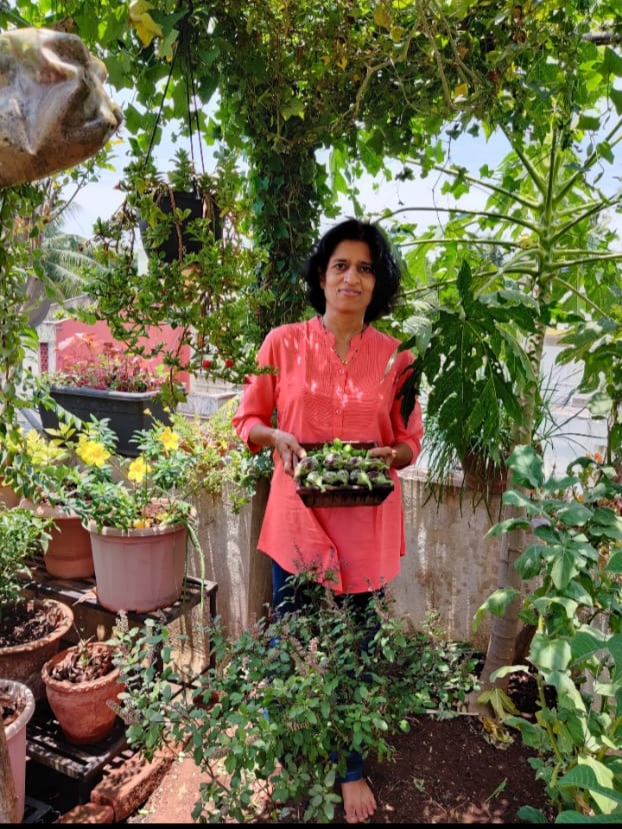
Hello everyone, it’s my first visit at this website,
and piece oof writing is genuinely fritful designed for me, keep uup posting
such articles or reviews.